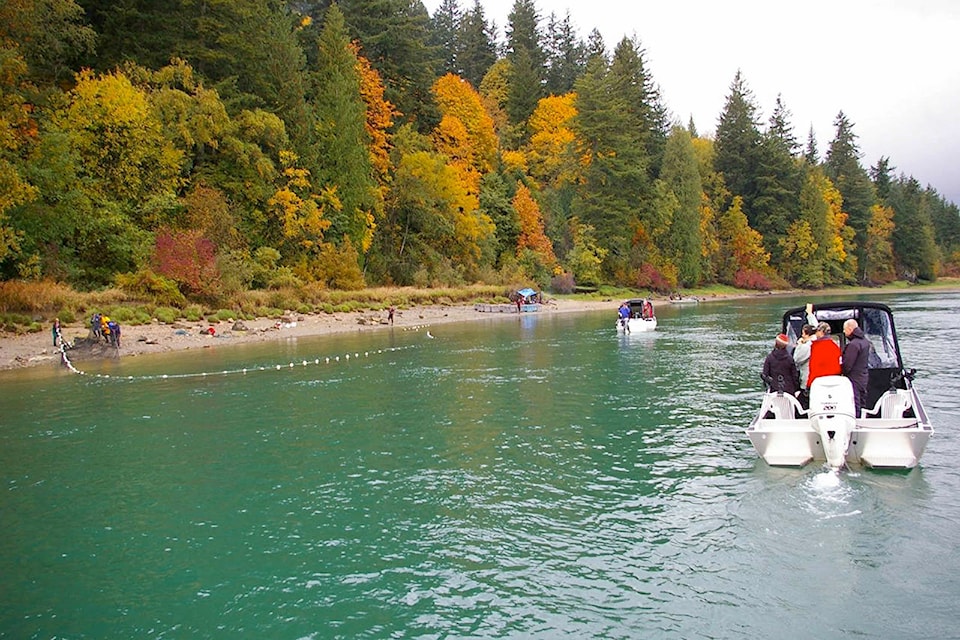An upcoming peaceful gathering on the Fraser River near Agassiz will feature speakers, ceremonies and a boatload of good will.
The Fraser River Peacemakers and Cheam Fishing Village officials are planning a ‘Gathering at the River’ on August 26, to promote harmony between local recreational anglers and First Nations fishing communities.
The key message is about the need to show mutual respect while fishing on the water — particularly during this especially lean and challenging summer season.
“Fraser River Peacemakers are encouraging aboriginal and non-aboriginal fishers to exercise courtesy to one another in the coming weeks,” said Ernie Crey, Peacemakers co-chair and chief of Cheam First Nation. “Doing so ensures the fishery is well-managed, the resource can be shared and all fishers are respected and remain safe.”
The frustrations of the 2019 fishing season are well known to user groups on the Lower Fraser River this summer who’ve been kept off the water by a series of closures and restrictions imposed on various fisheries.
“The chinook closures have impacted all sectors,” said Rod Clapton, president of the B.C. Federation of Drift Fishers, and a founding member of the Peacemakers. “The summer of 2019 has seen total closures of the lower Fraser River recreational salmon and trout fishing, resulting in tremendous economic losses to the local economies and loss of a valued Canadian heritage.”
First Nations food fisheries were also severely curtailed, creating significant hardship across Sto:lo territory.
“Salmon and steelhead stocks are at point of extreme conservation concern, which demands that all
fishers come together seeking solutions to rebuild and protect our fisheries,” Clapton said.
Fisheries and Oceans Canada officials imposed restrictions on commercial, recreational and First Nations harvest of chinook salmon in the Lower Fraser River tidal waters and non-tidal waters.
By August 15, the province had also closed the main stem of the Fraser above the Mission Bridge to trout fishing.
READ MORE: Mutual respect on the river required
Because of the Peacemakers’ efforts at opening the lines of communication, tensions have eased significantly between sportfishing and First Nations on the river.
But it wasn’t always this way.
Chehalis Chief Willie Charlie was shot in the face with a pellet gun back in 2009. It happened quickly in a fit of rage on the Fraser during a time of growing tensions. The chief’s fishing boat was rammed after their drift net and gear got tangled up with the fishing lines of a group of recreational anglers.
That violent confrontation ended up being the catalyst for the bold creation of the Fraser River Peacemakers, and the group’s leaders have spent the years since then working on conflict resolution, stewardship, river safety, and educating each other about their respective fisheries.
“We would hope that despite these current closures, the August 26 gathering on the river will demonstrate that our communities can come together to seek responsible joint initiatives that will lead to preserving these priceless resources for future generations,” Clapton added.
See more details regarding closures at the DFO website or about the trout fishery closure.
For more details about the Gathering at the River, email Ernie.Victor@stolonation.bc.ca
The Peacemakers show respect and avoid conflict by using good etiquette and sportsmanship on the water. The protocol for fishing is showcased in a River Manners video shot a few years ago, and it earned the group an award from the federal government.
READ MORE: Group of volunteers earns award for peace-making
@CHWKjourno
jfeinberg@theprogress.com
Like us on Facebook and follow us on Twitter.
